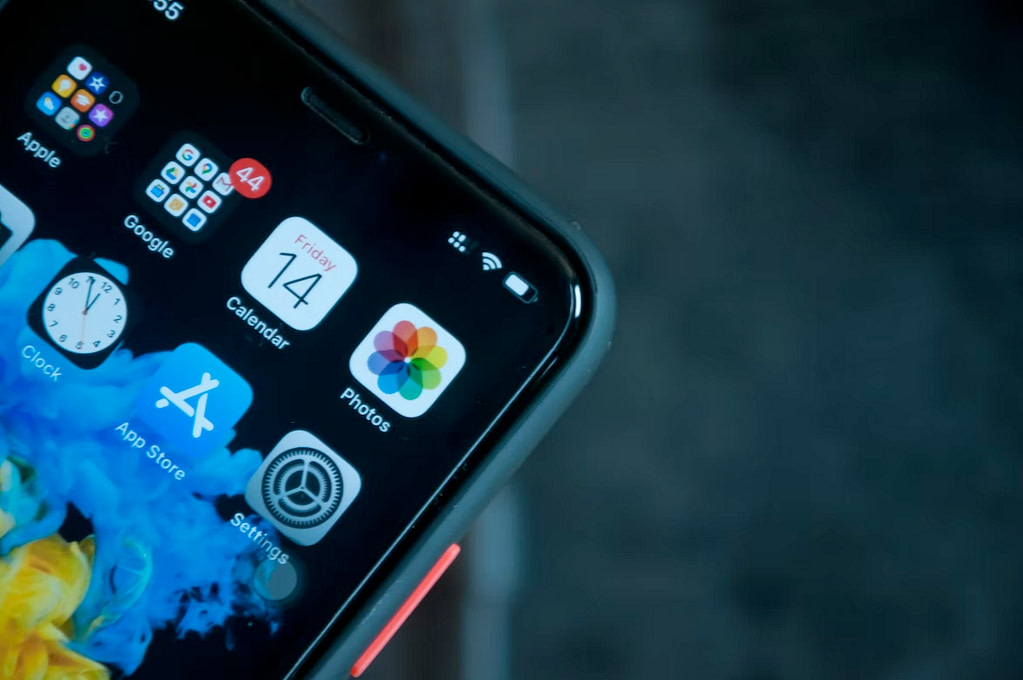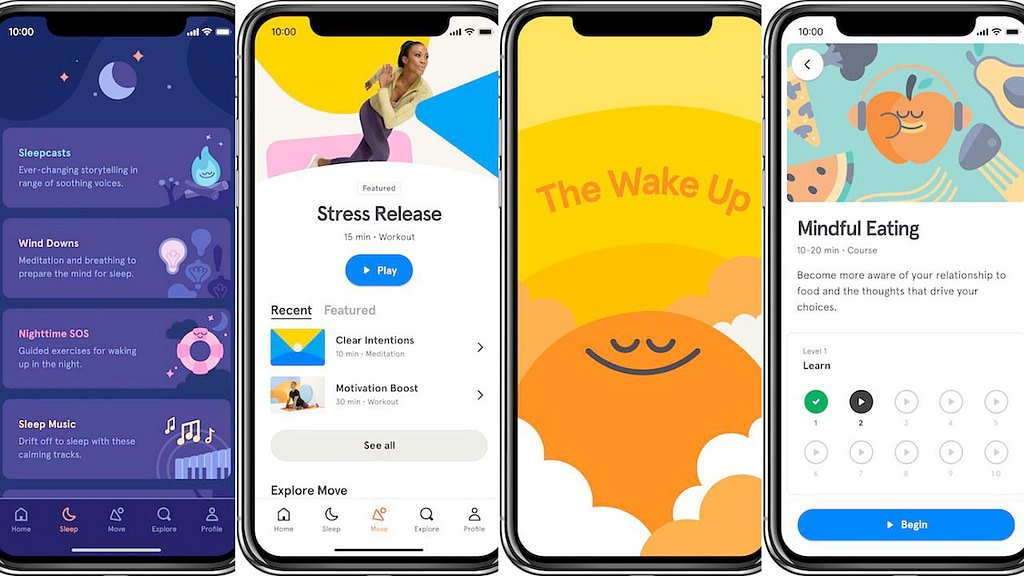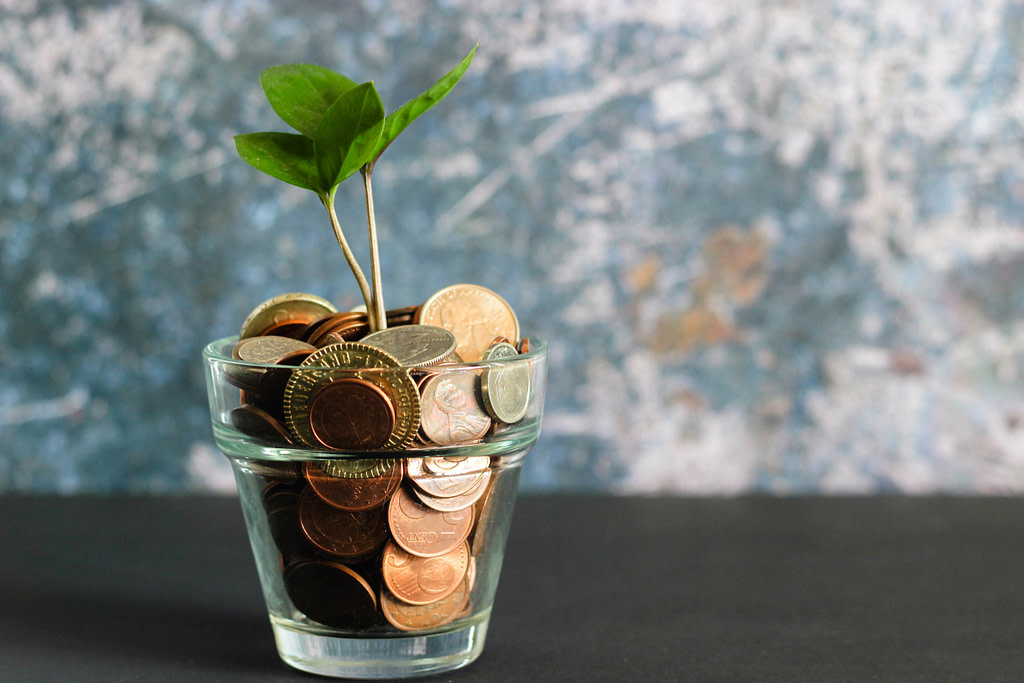Meditation apps have recently seen a surge in popularity, led by the established brands — Headspace and Calm. According to Business of Apps, Headspace has been downloaded 65 million times with 2 million annual subscribers, while more than 100 million people have downloaded Calm, which has a subscriber base of 4 million. Many similar brands have enjoyed success too.
There are a number of reasons for this boom. There’s now more emphasis placed on the importance of mental health, and meditation is seen as a helpful tool in reducing stress and making sense of our lives. This became especially important during the early days of the pandemic.
There’s also a broader movement to embrace a 360-degree approach to health, led by influencer-physicians such as Dr. Ragnan Chatterjee and Dr. Rupy Aujla, who see meditation as playing an important role alongside exercise, nutrition, and sleep in reducing the need for medical intervention.
Given the above, it’s easy to see why meditation apps can be profitable. That’s why you might be exploring the possibility of developing one yourself. To help you with that, in this article, we’ll explore some of the important aspects of meditation app development, including how to establish your unique value proposition, design considerations, and the all-important meditation app development cost.

Why is it worth creating a meditation app?
Meditation is growing in popularity. There are 275 million people worldwide meditating in 2022.
Given that Headspace and Calm have achieved such high downloads and subscriptions, it’s clear that meditation apps have played a big part in driving this growth. And where there’s growth, there’s profitability.
Users have certainly recognized the role meditation apps play in their physical and mental health. Anecdotal evidence suggests that many people benefitted from them at the height of the COVID-19 outbreak, placing a high value on their daily 10-15 minute break away from the continuous bad news cycle.
But apps’ efficacy has been backed by scientific evidence too. A JMIR Mental Health Magazine study found that meditation app users demonstrated improved mood and reduced stress. What’s more, meditation boosted the subjects’ attention spans.
Clearly, meditation app development benefits people’s lives. By building your own app, you can scale it to serve different user needs, incorporating exercises such as sleep experiences, visualizations, or breathing activities.
Of course, meditation apps aren’t the only ones that have experienced a surge in popularity in recent years. Read more about current technology trends in fitness apps.
Steps to develop a meditation app like Headspace or Calm
So how do you create a meditation app? Here’s our six-step guide:
Step 1: Start with careful research
For anyone wondering ‘How do you make meditation apps like headspace and calm?’ you first need to understand the needs of your end users. That means conducting thorough audience research. Who are they? Are they beginners or more experienced meditators? How could a meditation app benefit their lives?
Developing several personas — fictional profiles that represent groups of similar people in a target audience — can help you figure out how to reach your end users on a more personal level and keep their needs in focus throughout your meditation app development.
You should also analyze your competitors. What do their apps look like? What meditation services do they provide? And, importantly, what can you do differently?
Once you have this information, you can devise a product that will provide unique value to your audience.
Decide on the features you might like to include, for example, guided meditations, mindful movement exercises, visualizations, chanting, social/networking — or maybe something new and different altogether.
Gamified and social features are becoming increasingly popular — especially with Millenials and Gen Z’s, who are seeking ways to interact with others while using medication apps. Including these features can really help boost engagement.
Whichever direction you decide to go, a thorough analysis of the landscape is the best starting point.

Step 2: Decide on the platform
The next step is deciding whether you want to build an app for Android, iOS, or both. Your budget will be a key consideration here; building separate native apps will take longer and add to the meditation app development cost, but it will boost the reach of your app as it can be downloaded by users of both devices.
As an alternative, you could opt for a Progressive Web App (PWA), which works both on Android and iOS.
Step 3: Decide if you’re building it in-house or with a tech partner
Unless your business has a team of skilled developers, it’s nearly always best to collaborate with an experienced tech partner — ideally, one that offers meditation or fitness app development services. This will save you time hiring developers, and you’ll have all the necessary skills at your disposal — even if your needs change during the course of the project.
A tech partner with experience in meditation app development can also help to validate your idea, identifying solutions that are proven to work and resonate with users.
Step 4: Design your product
The look and feel of your app will have an important bearing on its usability — and how your brand is perceived. It’s therefore essential you give it careful thought.
Whether you’ve chosen to develop your app in-house or with a tech partner, you’ll need to draw on the expertise of visual (UI) and user experience (UX) designers. As you might have guessed from the job titles, visual design concerns how the app looks, whereas UX design is more to do with how your audience interacts with it. Both are vital in ensuring your product functions intuitively; in other words, users find navigating their way around the app easy and enjoyable.
The design stage gives you a chance to really think about how your app functions and gives developers a definitive blueprint from which to work. In short, having proper designs saves time and money during the development process.
When it comes to visuals, it’s worth noting how popular meditation apps like Headspace and Calm use design. Headspace uses warm and friendly shapes, colors, and characters to create a more inclusive space, aligning with its mission to make meditation more relatable. Meanwhile, Calm uses naturalistic colors, typefaces, and imagery to evoke tranquility and serenity.
Consider how you want users to feel when interacting with your app and use its design to reflect this.

Step 5: Build a prototype
An app prototype is essentially an interactive mockup. Prototypes are classed as low, medium or high-fidelity, depending on their level of detail.
A low-fidelity prototype (sometimes called a ‘navigation concept’) is basically a series of sketches visualizing the scope of the app. These days the sketches are likely to be digital, but they can also be hand drawn. A low-fidelity prototype helps to ensure that you and the development team are aligned on how the product will work.
Medium-fidelity prototypes are more detailed, although still some way from the final design. They’re usually presented to user groups to test if the app’s navigation works.
High-fidelity prototypes are closer to the final product and are used in the later stages of meditation app development to test usability and identify issues in workflows. Because they look like live software, users are more likely to behave naturally during testing. Hi-fidelity prototypes also give you a clearer idea of how the product works before it goes live.
Each prototype offers a different level of data. Using them throughout the meditation app development process will deliver insights that can help your tech experts build an app that’s on point in terms of usability.
Step 6: Build an MVP and carefully test it with your users
When it comes to launching your app, it’s worth thinking about going live with a minimum viable product (MVP) — in other words, a stripped-back version with basic functionality. Not only is it a budget-friendly approach to getting something on the market quickly, but it also gives you a chance to analyze user behavior before adding more sophisticated features at the second stage of app development.
An effective MVP might include a registration and sign-in page; a user profile showing progress stats; an introductory course with a short video or animation; a limited library with pre-recorded meditation sessions; and gamification allowing users to achieve new meditation levels.
Once your MVP is live, it’s vital that you continue to test and learn from its performance. This will inform your development roadmap and ensure future iterations are successful.
If you know absolutely nothing about making apps, fear not! Our article, “How to make a fitness app,” is a good place to start.
Headspace and Calm success stories
Earlier, we touched on the design considerations behind two of the most popular meditation apps, Headspace, and Calm. Let’s take a closer look at how they were built and what’s the secret behind their success.

Headspace was founded in 2010 by ex-Buddhist monk Andy Puddicombe, whose vision was to make meditation accessible to everyone.
His team achieved this using a friendly, welcoming design and communicating abstract ideas with the help of colorful characters and symbolism.
The app is notable for its slick onboarding experience, which has been optimized through in-depth analysis of user behavior. New mediators are first welcomed to the app before being asked a few simple questions about their experience, goals, and how they’d like to meditate.
The app uses this data to personalize each user’s experience and boost engagement. For example, if a meditator wants help sleeping, the app will send them a reminder to take some time out and meditate just before bed.

Calm, which launched in 2012, aims to help users become more mindful through daily sessions and regular practice, with exercises in meditation, stress relief, focus, and help to sleep.
As you’d expect, given the app’s name, the interface is soothing and minimalist.
Like Headspace, Calm has nailed the onboarding funnel — a vital moment in the customer retention lifecycle.
By asking new users what their goals are, they also show how the app can change their life, promising to, among other things, ‘improve focus’ or ‘reduce anxiety’.
Calm offers its new users an introductory course, ‘7 Days Of Calm’, where they teach the basics of meditation and encourage habit-building.
Overall, the feel is calm and meditative down to the smallest detail — users with headphones even hear nature sounds as they interact with the app.
Popular features of meditation apps
It’s important to consider the features that your target audience will find valuable. Examples might include:
- Daily guided meditations
- Breathing exercises
- Concentration-boosting music
- Calming sleep exercises
- Mindful movement workouts
- Relaxation tips
- Help managing stress
Of course, that’s by no means an exhaustive list. In fact, coming up with your own innovative features could help set you apart from the competition. You may even want to incorporate the latest AI technology into your app, like computer vision.
Meditation app development cost
How much does it cost to develop a meditation app? That depends on a number of factors.
As we’ve already mentioned, building an app for iOS, Android or PWA will have an impact on the financial outlay. Then there’s the level of functionality; the bigger the scope of work required to build your app, the higher the cost.
To get an accurate picture, you’ll need to carefully analyze each element of your product with your tech developers. It’s very hard to give a ballpark figure based on the general idea for an app.
To give you a sense of what the costs might be, if you wanted to build an MVP, then you’d have to expect to pay in the region of $50-$100k, while a fully-featured solution is likely to cost anywhere between $100-$500k.
If you’d like to know more, read: How much does it cost to build a fitness app?

How to monetize your app
Are meditation apps profitable? Let’s look at three ways to generate revenue from your meditation app:
Subscriptions: this is the most common monetization model. Users commit to a monthly or annual fee in order to access all the app’s features. It’s favored by most of the leading apps, including Headspace — so clearly, it’s profitable!
In-app purchases: Typically, developers using this model offer a basic version of the app for free but allow users to buy specific session packs to unlock other content in order to generate a profit.
Adverts: Many apps make their money from showing ads to users. They can be distracting and irritating, so it’s worth thinking twice before monetizing your meditation app using this model. As an alternative, consider Duolingo’s ‘freemium’ model: the language app offers a free version that contains a reasonable amount of ads, while users can choose to upgrade to an ad-free premium option by paying a subscription.
Are there any challenges in developing meditation apps?
There will always be challenges while building apps similar to Headspace and Calm; here are a few you can expect:
1. Uninterrupted playback
Interruptions are the last thing users want when meditating, so it’s important that narration and music play smoothly. The audio also needs to be high quality. If meditations last a long time, that can mean big files requiring a lot of bandwidth.
2. Ease of use
Attracting new users and helping them build their meditation habits is essential, so your app needs to be intuitive. You want to give meditators a calming experience where they can focus on being mindful; if they feel frustrated and confused by the interface, that’s going to be harder to achieve.
3. Smooth operation
Following on from above, the demand for meditation apps to operate flawlessly is higher than for other apps. Avoiding bugs and glitches is critical.
Meditation app development – summary
The increasing popularity of meditation and the success of apps such as Headspace and Calm shows there’s value to be had in building your own meditation app. By entering the market, you would improve your users’ lives, too — meditation app development benefits have been backed by anecdotal and scientific evidence.
To be a success, you need to approach the project methodically. Start by taking the time to really understand your target audience, their goals, and what motivates them. Research your competitors and the services they offer. Then think carefully about the unique value your business can provide.
Your available budget will obviously shape a lot of your decisions. And your choice of whether to develop the app in-house or with the help of a tech partner is an important one. The best advice is to work with experts who will build your product quickly and efficiently, avoiding common risks that may extend the development time and costs.
